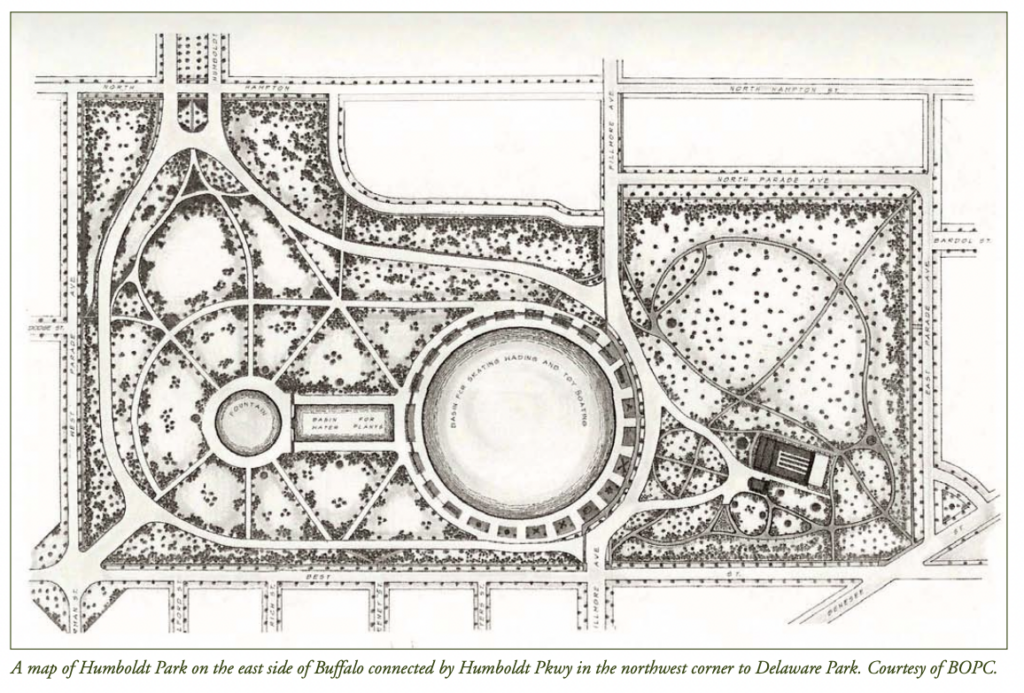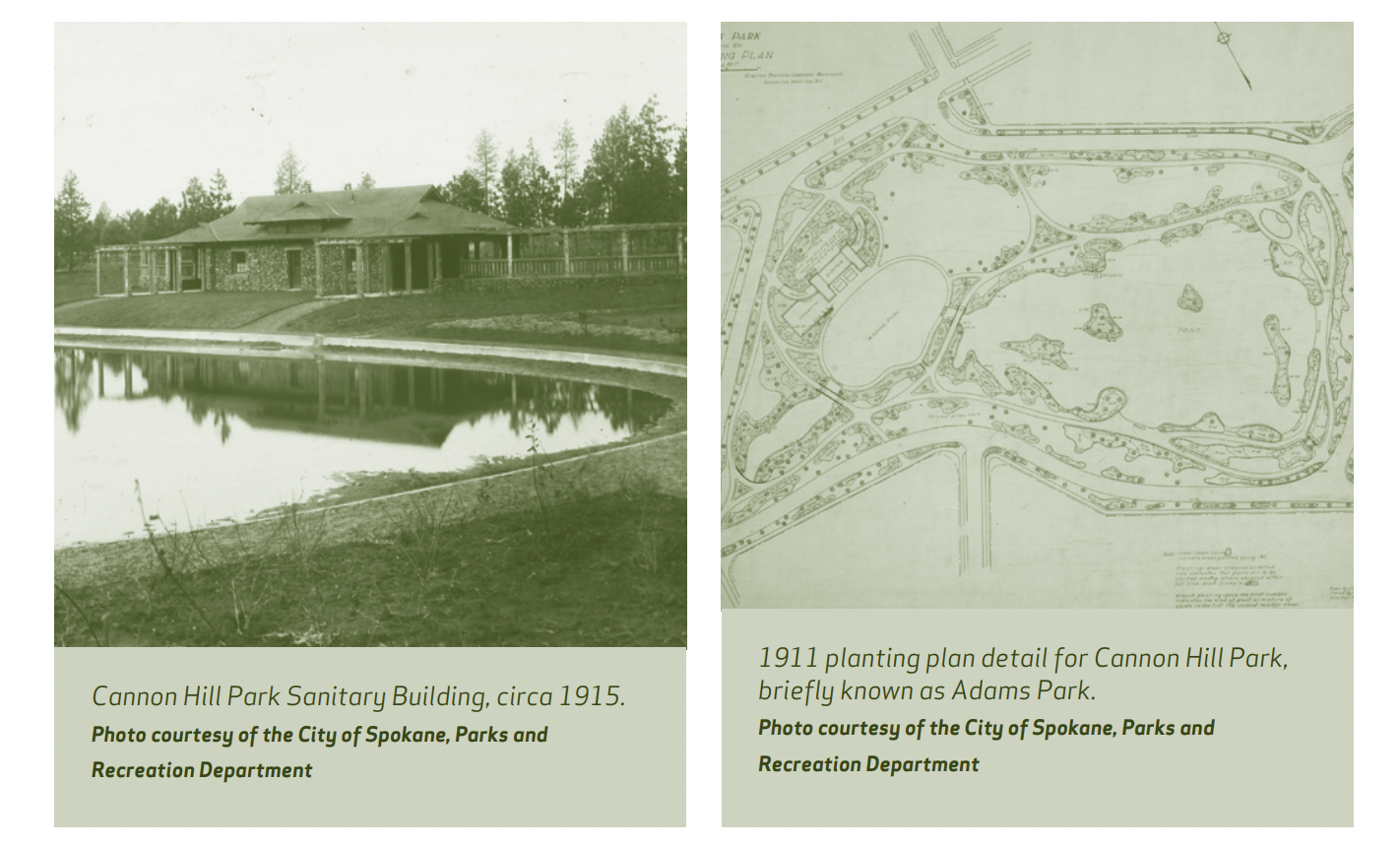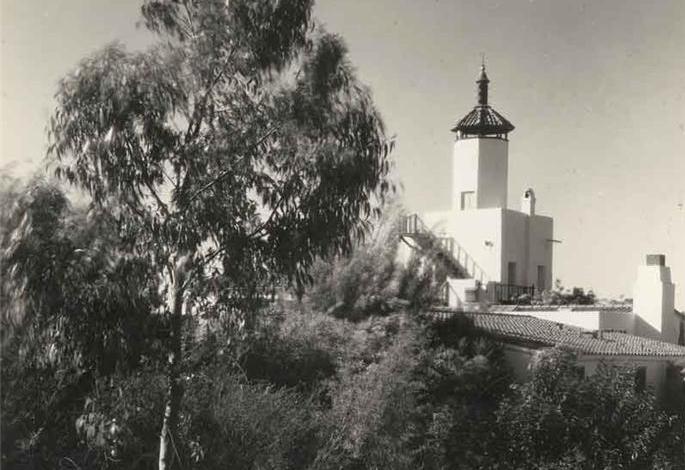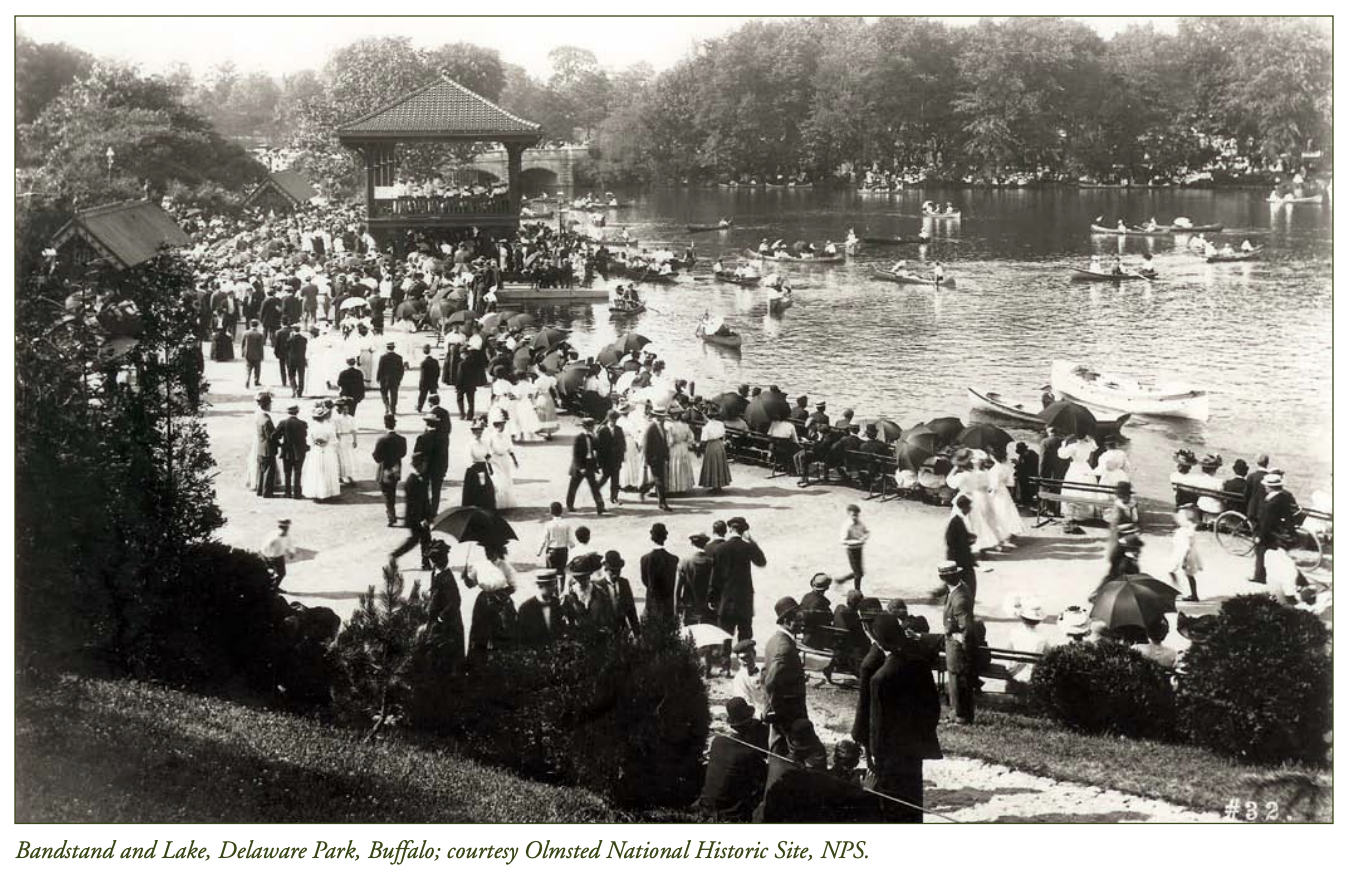
Frederick Law Olmsted and Calvert Vaux designed the first park system of its type for Buffalo, New York, beginning in 1868. Three separate parks were connected by broad, tree-lined parkways, complementing the radial street plan laid out by Joseph Ellicott in 1804. After Olmsted split with Vaux in 1872, he designed many other public and private landscapes in Buffalo. From the mid 1880s, John C. Olmsted assisted on his stepfather’s Buffalo projects. After Olmsted Sr. retired in 1895, John maintained the firm’s ties with the city. As this document indicates, at the end of the century, the integrity of Delaware Park, a pastoral landscape that was the largest of Olmsted and Vaux’s three parks, began to come under attack.
In May of 1897, John traveled to Buffalo to try to dissuade the park commissioners from erecting a new building for the city’s historical society on a site overlooking the park lake. Under the headline, “Olmsted Threw a Brick at the Park Board,” the Buffalo Express reported that the landscape architect condemned the proposed location in no uncertain terms. Furthermore, he suggested that by inserting monumental institutional buildings into the park landscape, which had been carefully crafted for the enjoyment of natural scenery, the park commissioners were turning their backs on the primary purpose of the park. John’s words did not go down well with the commissioners and his advice was soundly rejected. The president of the park board, William Hengerer, dismissed his objections as “silly.” Eventually, the white marble, temple-fronted Neo-Classical edifice, the creation of French-trained local architect George Carey, went up on the site of a former carriage concourse above North Bay.











